Why working with nature pays off: The case for investing in Ecosystem-based Adaptation

This series of papers compiles arguments, facts and examples on the evidence of the effectiveness of EbA in the form of short, easy to read briefs.
Looking first at why EbA pays off in general, then at EbA in the water sector, in agriculture and in cities, it showcases why EbA offers cost-efficient solutions for adaption to climate change while also providing additional benefits for people and nature.
Each of the four briefs can also be used as a stand-alone document e.g. when discussing adaptation options with planners and decision makers in water management, land use or urban planning.
‘Down to earth – why soils play a key role in ecosystem-based adaptation
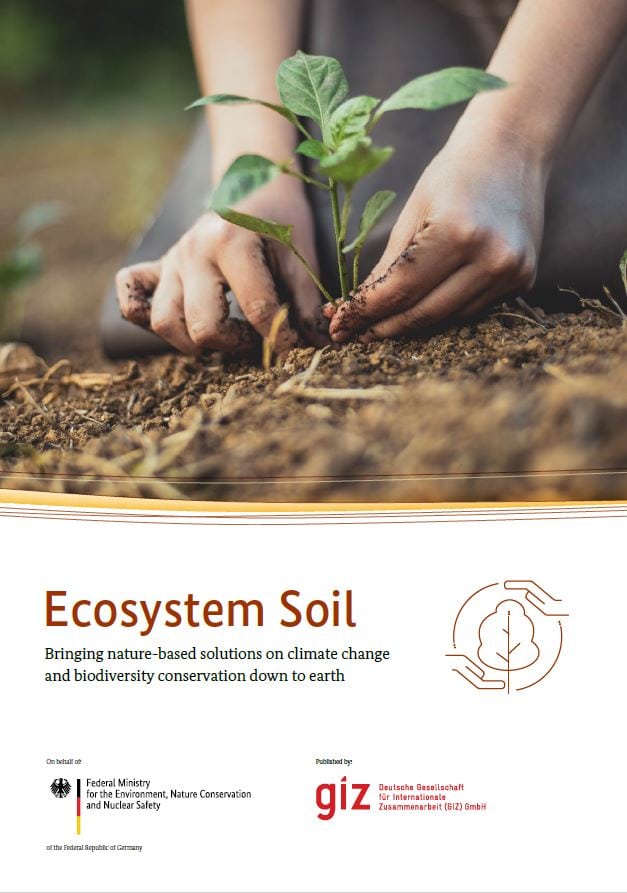
There is an unprecedented interest in nature-based solutions for climate change mitigation and adaptation. But something very important is often missing from discussions of such solutions: the role of healthy soils. As habitats for plants and animals, as regulators of climate and water, and as the foundation of terrestrial ecosystems and the vast majority of our food production, soils are critical to all ecosystem services – including those that humans depend on for survival.
This guidebook aims to demonstrate the importance of sustainable soil management (SSM) for adaptation to climate change, biodiversity conservation and the achievement of long-term food security. By adopting nature-based solutions such as ecosystem-based adaptation (EbA), farmers can dramatically increase their productivity while adapting to climate risks.
Digital solutions for small-scale farming: Fostering climate resilient and low carbon agrifood systems
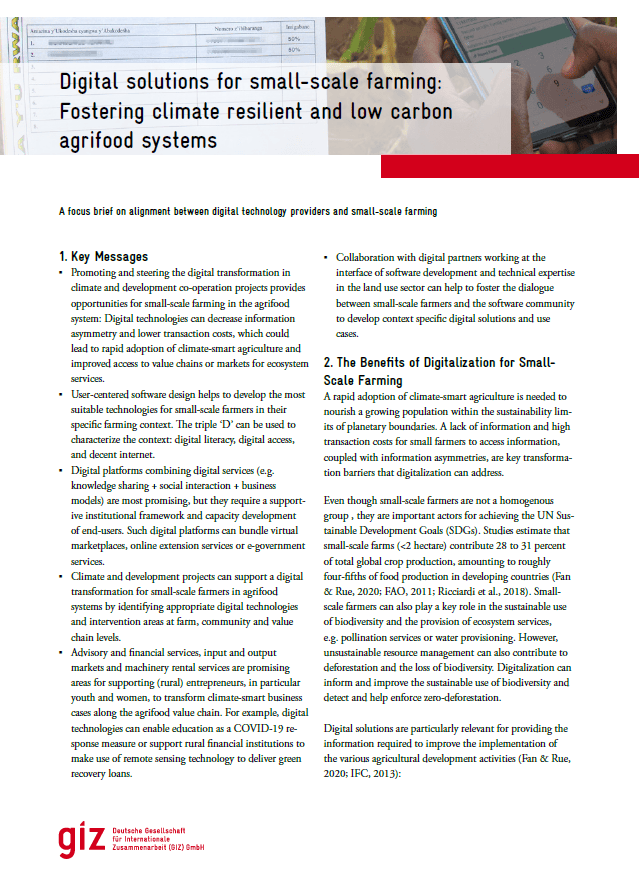
A brief on alignment between digital technology providers and small-scale farming. This complementary publication to the Overview brief presents in more detail the approach to assess and adopt digital technologies that support smallholder farming.
The power of digitalization: Transforming agrifood systems to enhance climate benefits
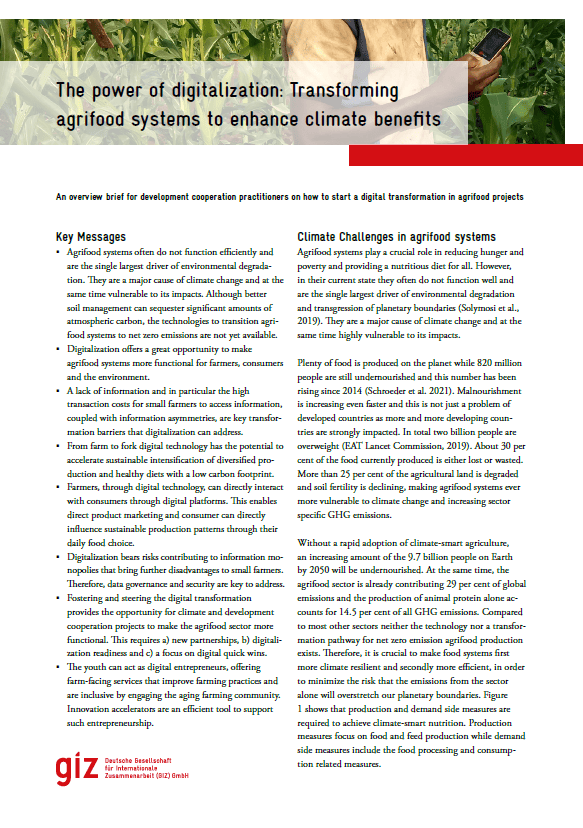
Agrifood systems play a crucial role in reducing hunger and poverty and providing a nutritious diet for all. However, in their current state, agrifood systems often do not function well and are the single largest driver of environmental degradation and transgression of planetary boundaries. Therefore, they are both a major cause of climate change and at the same time highly vulnerable to its impacts.
Digital tools provide the potential for transforming agrifood systems. From farm to fork digital technology has the potential to accelerate sustainable intensification of diversified production and healthy diets with a low carbon footprint.
This briefing, the first one of two, presents an overview for development cooperation practitioners on how to start a digital transformation in agrifood projects, especially with regard to climate resilience and GHG emission reductions.
Fiche technique Changement climatique et développement rural
C‘est un enjeu fondamental pour l’avenir de l’humanité de nourrir une population mondiale en augmentation constante, tout en respectant les limites de la planète. Les modèles dominants de production et de consommation entraînent la perte des bases d’existence naturelles et détruisent les écosystèmes et leur fonctionnement. En 2017, 820 millions de personnes souffraient de sous-alimentation. Le changement climatique renforce cette tendance et pousse les écosystèmes naturels jusqu’aux limites de leur capacité de charge, entraînant ainsi de graves conséquences pour l’environnement, l’économie et les êtres humains. Afin d’assurer la survie de l’humanité, il est nécessaire de rendre les systèmes agro-alimentaires plus durables et plus résilients au climat.
Systemic Challenges, Systemic Responses – Innovating Adaptation to Climate Change through Agroecology
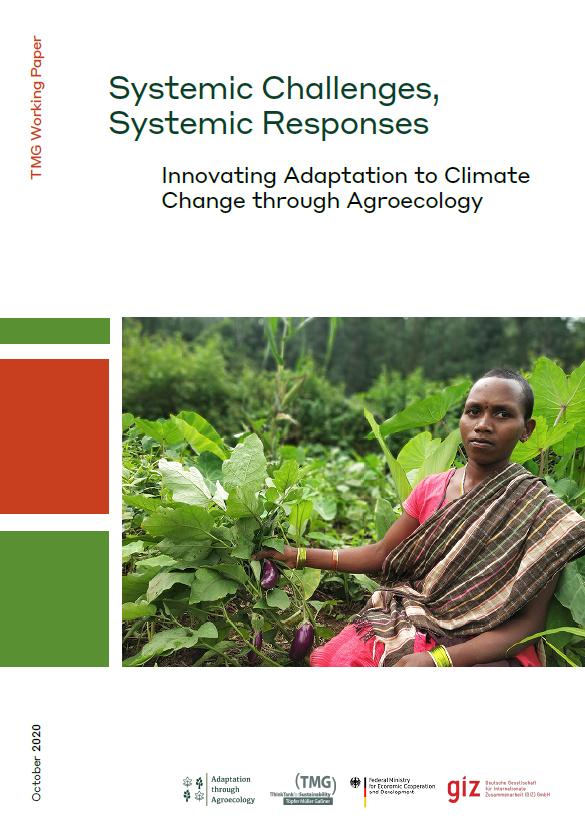
This document summarises several consultations of experts, policy makers and practitioners on the contribution of agroecology to innovative and transformative climate change adaptation responses.
Sustainable Land Management for Upscaled Climate Action
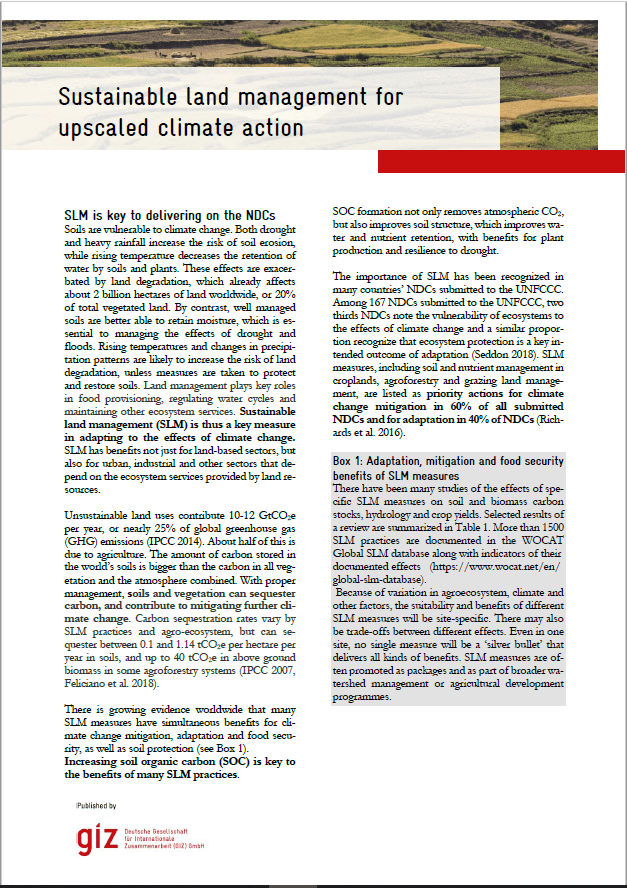
There is growing evidence worldwide that many SLM measures have simultaneous benefits for climate change mitigation, adaptation and food security, as well as soil protection as pointed out in this study by GIZ and UNIQUE.
